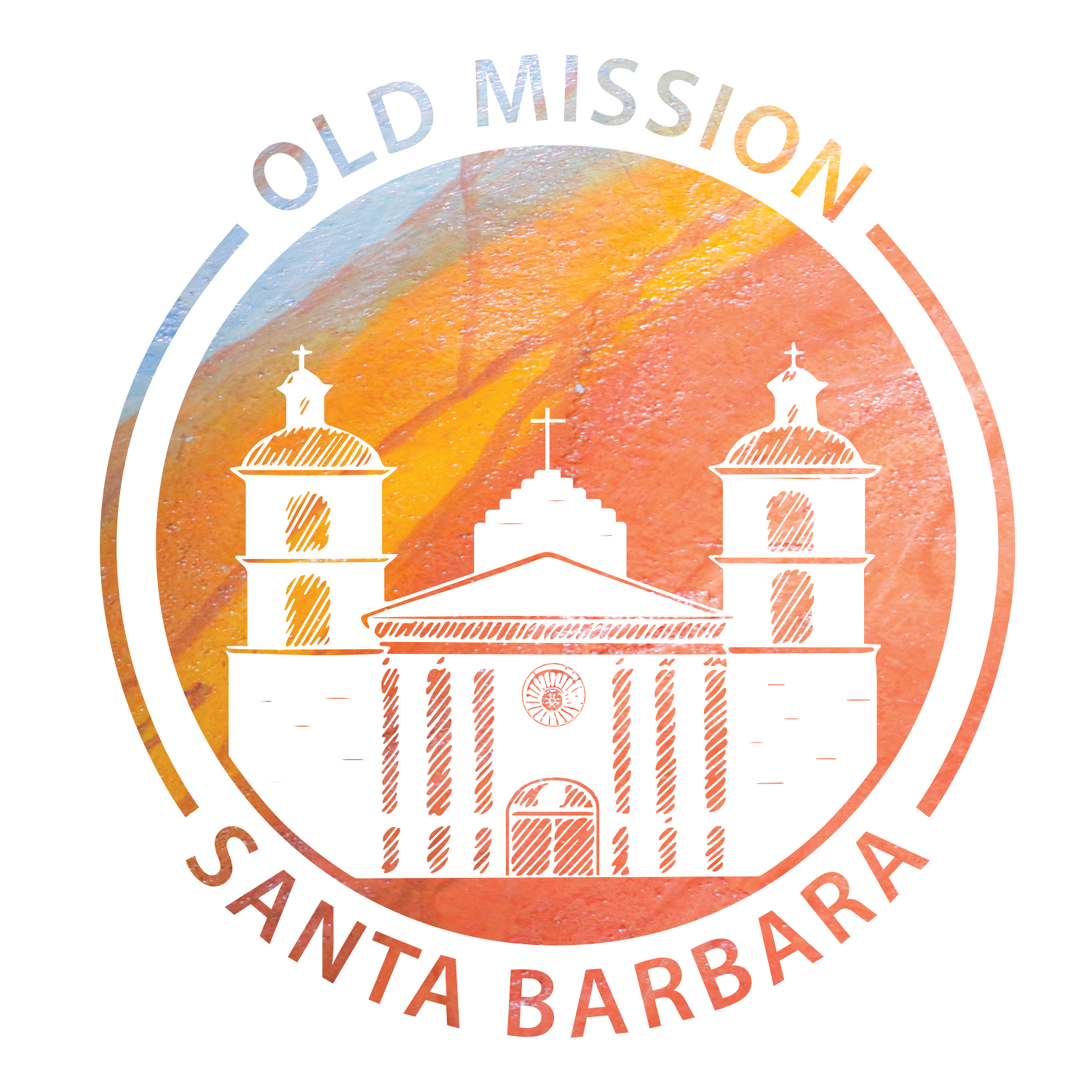Old Mission Santa Barbara Tour:
“The Inside Story”
The Role of the Mission
For about 11,000 years the Chumash lived on the central coast of California between present-day Malibu and San Luis Obispo. There were several key communities in the Santa Barbara-Goleta area. Looking toward the ocean, try to imagine the area before and after contact with Europeans. Before contact, a major Chumash village, Syuxtun, was located at the mouth of Mission Creek with an estimated population of 600. Chumash settlements included an open-air dance ground with an enclosed sacred space used for ceremonial purposes and formal cemeteries with whale bone markers. Accounts from explorers describe houses made of reeds and “shaped like half-globes,” spacious, and with an opening at the top to allow for light to filter in and smoke to escape. They varied in size from 12 to 20 feet in diameter.
After European contact, El Presidio Real de Santa Bárbara was visible. This Spanish military fort was established in 1782 and initially consisted of mud and brush walls around a quadrangle 330 feet on a side. The post had 61 officers and men in 1783. Spanish soldiers were posted at this fort to protect the settlement and growing colony.
The colonization of the Americas began in earnest in the early 16th century in what is now central Mexico. Franciscan friars were chosen by the Spanish government not only to preach to the Indians, but to teach them new skills so they could become productive citizens for Spain. Twelve Friars arrived in New Spain (Mexico) in 1523 and would be key, along with other religious Orders, in evangelizing to Indigenous peoples especially in areas on the periphery of the colonial settlements. The Franciscans arrived in Alta or Upper California—considered the frontier—to establish Missions in 1769. Spanish colonists and soldiers also arrived to establish towns that would help Spain keep control of the most northern reach of its colonies in the Americas.
For missionaries and colonists in California, domesticated agriculture and animals were considered an essential part of building and supporting colonial settlements. What was produced at Mission Santa Barbara would feed those living at the Mission (friars and baptized Chumash people), the soldiers of the Presidio, and growing number of colonists.
Colonists from New Spain (Mexico) brought animals such as cattle, sheep, goats, pigs, and horses, as well as many plants such as wheat. European style farming and ranching often resulted in the destruction of the natural habitats which before contact supplied the Chumash with traditional foods and other resources. Colonists also inadvertently brought pests, such as rats and invasive plants. The disruption of natural habitats and traditional foods eventually led many Chumash to the Mission because of the food available here.
Baptized Chumash were expected to live at the Mission and their village was located in the area of the current parking lot. Single women were housed separately.
Along with plants and animals, colonists also brought diseases which were not known in this area and for which the local population did not have immunity. These diseases caused epidemics and a tremendous loss of life not only in Santa Barbara, but throughout California. The introduction of new food sources weakened the immune system of many Native peoples at the Missions. In addition, they were now living in very close quarters allowing illnesses to spread easily. The synthesis of these factors caused a startling prevalence of high infant mortality, low fertility, and a low life expectancy for Indigenous people in California. The overall impact of the Mission period on Indigenous communities was devastating as a serious decline in population meant Native communities struggled to hold on to their culture, language, and traditions.
Today, an ongoing process of collaboration seeks to better understand the diverse perspectives of individuals and communities that are part of the Mission’s history. In a spirit of reconciliation and healing, we continue learning from our experiences and the experiences of those affected by the Mission era. In the middle of the 20th century, the Catholic Church articulated a view of missionary activity that respects the dignity of all people and forbids any forced conversion of non-Christians into the faith. As Franciscans today, we recognize missionary activity as a calling to share the Good News of the Gospel by bearing witness to God’s abundant love in the world. With a missionary spirit that animates us to “encounter [people] with an open mind and a wide heart” we strive to meet physical and spiritual needs with an approach of humility, patience and understanding. Our varied ministries, outreach and works of charity reflect our deep belief in the goodness inherent in others, in the world, and in the whole of creation.

